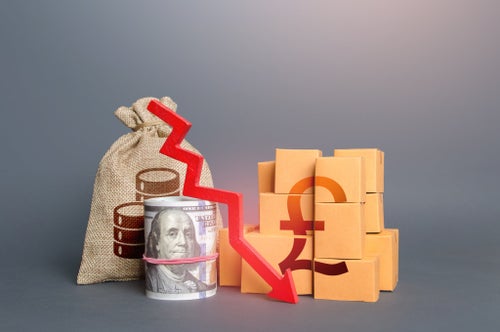

The 30-year gilt yields dropped this morning, shortly after the chancellor said he will be making an emergency statement about the mini-budget.
The Bank of England used gilts to rescue the UK market in recent weeks, but stopped on Friday.
So, this morning’s change in the market is actually a good thing – it means that the value of the gilt has gone up.
But just what is a gilt and what does it have to do with the UK economy?
Here’s what you need to know.
What is a gilt?
A gilt is another term for a government bond, and a bond is a very secure form of investment.
They’re sold by governments or corporations when they’re looking to make money.
The market value of the bond changes over time according to how many investors are interested in it.
And a gilt yield represents how much money an investor receives for owning the debt as a proportion of the price at the time.
If the price goes down and the yield goes up, that’s bad for the economy – it means fewer investors are buying it.
On Monday, it was the other way around. The yield went down, and the price went up.
Buying a gilt is not the same as buying stocks in a company, as bonds don’t give you a share of ownership.
Instead, it’s a loan from the investor, who buys the bond, to the company (in this case, the government) who issued the bond.
Government bonds are seen as a particularly safe form of investment because they are more likely to be paid on time, and so are seen as higher-quality with lower interest rates.
The term “gilt” or “gilt-edged security” is used to describe government bonds because of how secure they are. The UK government has never failed to make interest or principal payments on gilts.
The government’s debt management office (DMO) also defines a gilt as: “A UK government liability in sterling, issued by HM Treasury and listed on the London Stock Exchange.”
What is an “index linked” gilt?
These are different to regular gilts because both the first payment and the semi-annual coupon payments (a fixed payment every six months) move in line with the General Index of Retail Prices.
This is otherwise known as the RPI and is one measure of inflation rates, although not the most commonly used one. The Office For National Statistics, for instance, mostly uses Consumer Price Index (CPI) when producing its monthly figures.
Essentially, these are the government bonds which increase in value during periods of inflation.
So, what does this have to do with the economy now?
The Bank of England bought index-linked gilts from October 11 to October 14, “alongside the Bank’s existing daily conventional gilt purchase auctions”.
The Bank explained there was a “material risk” to financial stability, and so it would buy up to £10 billion of index-linked debt each day for four days to help keep the UK market afloat.
Essentially, the Bank had to do this after buyers stopped purchasing the government’s bonds after Kwasi Kwarteng unveiled his mini-budget last month, which contained £45 billion of unfunded tax cuts.
The huge announcement spooked the market (causing the pound to plummet in value) and led to a £2.1 trillion sell-off in government bonds.
The Bank then ceased bond-buying after spending £19.3 billion on Friday, but by the time the markets had opened again on Monday, things were looking up again.
“As intended, these operations have enabled a significant increase in the resilience of the sector,” the Bank explained in a new statement.
Yields on 20 and 30 year-gilts also increased on Friday after Truss’s press conference failed to calm the markets about the government’s plans.
So, this positive news from Monday about the gilt yields only takes the markets back to where they were last week. They are still much higher than they were before the mini-budget was announced on September 23.